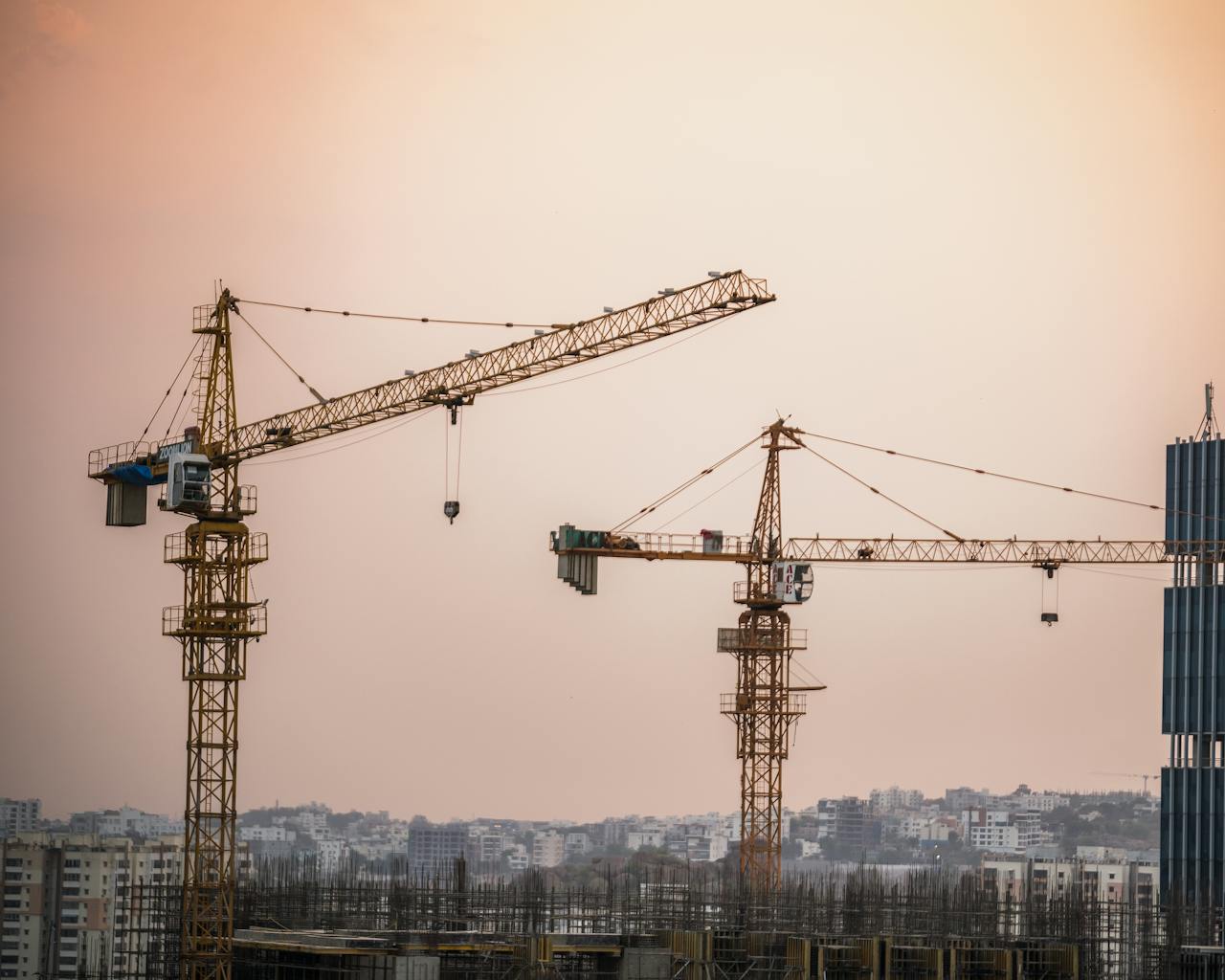2025 is a pivot year for the Infrastructure Investment and Jobs Act (IIJA). In year four of a five-year law, cash is still flowing, but program rules, timelines, and even program names are shifting. Here’s what’s changed, and what owners and contractors should do about it.
Surety Bond Professionals is a family-owned and operated bonding agency with over 75 years of experience. With access to a broad range of surety markets, our expert agents are ready to assist with all of your construction bond needs.
What’s Fundamentally Different About IIJA Funding Flows In 2025?
For the first part of the year, many transportation programs operated under a full-year continuing appropriations law signed in mid-March. Practically, that meant some solicitations and apportionments slid later on the calendar, and agencies leaned on standard obligation-limitation mechanics, including the late-summer “August redistribution.” DOT publishes a monthly scorecard showing how IIJA dollars are being used across modes.
How Are Competitive Grants Shifting?
The flagship discretionary grant program reverted from RAISE back to BUILD in 2025, with DOT running multiple rounds and posting awards under the restored branding. Solicitations, FAQs, and awards now appear under BUILD.
Safety funds are also evolving. The Safe Streets and Roads for All (SS4A) NOFO for FY2025 tweaked requirements. For example, the minimum share set aside for planning and demonstration dropped from 40% to 30%, which can free up more money for implementation. DOT’s “What’s New” sheet highlights other 2025 differences. Learn more about the early impacts IIJA had on roads in this blog.
What’s Happening With Buy America And Other Compliance Rules?
Buy America tightened for highway projects.
On January 14, 2025, the Federal Highway Administration (FHWA) issued a final rule ending its long-standing, general waiver for manufactured products and setting explicit Buy America requirements for those items. FHWA later delayed the effective date while stakeholders adjusted—but the direction is clear: expect more domestic-content documentation. Check the current text at 23 CFR 635.410 and agency guidance.
FHWA repealed the federal greenhouse-gas performance measure.
Specifically for state DOTs and MPOs on April 18, 2025. That removes the federal requirement to set declining CO₂ targets in the highway program, though states can still do it voluntarily.
EPA and other agencies continue to update.
The updates are to Build America, Buy America (BABA) implementation procedures for grants (including Clean School Bus, Clean Ports, and other IIJA-funded programs). So, expect program-specific FAQs and memos throughout 2025.
What Changed For EV Charging (NEVI) Money?
In the biggest swing of the year, the FHWA suspended approval of state NEVI deployment plans on February 6, 2025, while it reworked guidance. It then issued Interim Final Guidance on August 13, 2025. The revised guidance streamlines plan content, simplifies approvals, and provides states with more flexibility on station spacing and “built-out” determinations, potentially accelerating obligations for both corridor and non-corridor sites once plans are resubmitted and approved.
What About Water, Transit, And Rail Dollars?
On the water side, the EPA released final FY2025 allotments for the Drinking Water and Clean Water State Revolving Funds, including IIJA supplemental and Emerging Contaminants dollars—approximately $8.9 billion in new SRF opportunities this year, routed through states. Transit apportionments and program guidance also reflect the IIJA’s five-year structure and advance appropriations. For example, Capital Investment Grants (CIG) show both authorized and advance-appropriated IIJA amounts in FY2025 program notices.
Did Dot Policy Guidance Change More Broadly?
Yes. The FHWA formally rescinded the “Build a Better America” policy memorandum in March, signaling a broader reset toward a strict statutory reading and fewer extrastatutory policy overlays. Expect solicitations and guidance to be shorter, with more flexibility handed to states and applicants, as well as fewer federal add-ons.
What Should Contractors And Owners Do Now?
- Mind the clocks. Confirm obligation deadlines with your state DOT and MPO; build schedules that land before Sept. 30 when using FY2025 highway dollars or redistributed funds.
- Re-read the NOFOs. SS4A and BUILD criteria shifted. Adjust narratives (benefit-cost, equity, safety, freight, resilience) to the 2025 language.
- Tighten sourcing plans. Update submittal templates and supplier attestations for Buy America/BABA—especially for manufactured products on FHWA jobs.
- Track NEVI resets. Coordinate with state energy/transportation leads on resubmitted plans and site readiness so you can move quickly under the interim guidance.
- Follow the money. Use EPA’s FY2025 SRF tables to time water/wastewater proposals and monitor monthly DOT funding status pages for late-breaking shifts.
What Does IIJA Mean for Surety Bonds?
As IIJA changes, contractors must understand how that will affect surety bonds.
Bid Bonds
With all the changes in deadlines, grant programs, and compliance, bid bonds will help demonstrate to a project owner that the contractor’s submittal is credible. Sureties will ensure that proposals align with the latest NOFO requirements and that deadlines meet obligations.
Performance Bonds
When guidance changes mid-year, performance risks inevitably rise. Sureties will evaluate whether contractors can adapt to sourcing, compliance, and delivery without exceeding budgets or missing timelines. Strong documentation and realistic plans will support performance bond approvals.
Payment Bonds
When there are multiple subcontractors and suppliers on a project, payment bonds can make sure that everyone is compensated, even if federal program rules change during the project. Contractors who demonstrate clear sourcing strategies and transparent compliance with Buy America/BABA rules reinforce trust with both sureties and subs.
Call Us Today
Our surety bond professionals will help you grow your revenue by maximizing your surety capacity. Call us today!
Frequently Asked Questions
Does the switch from RAISE back to BUILD change who can apply?
No. The program’s branding and evaluation emphasis shifted, but eligibility remains broad for local, regional, tribal, and state sponsors. Read the FY2025 FAQs/NOFO to align proposals with the new priorities.
Are there new match requirements in 2025?
Core statutory matches (e.g., 80/20 for many highway projects) didn’t change. Some competitive programs can vary by project type and applicant. Always check the specific FY2025 NOFO.
What exactly changed with Buy America on highway jobs?
FHWA ended its general waiver for manufactured products and set domestic-content rules for those items (steel/iron rules remain). The agency delayed the effective date briefly, but you should plan for tighter documentation going forward.
Is NEVI funding “paused”?
Approvals of state plans were suspended in February, but FHWA issued Interim Final Guidance in August 2025 to restart the pipeline with streamlined requirements. Expect states to resubmit plans; projects can proceed once the plans are approved.
Where can I see how much IIJA money is left?
DOT posts a monthly IIJA funding status snapshot. It’s a handy way to see obligations and outlays by mode.





